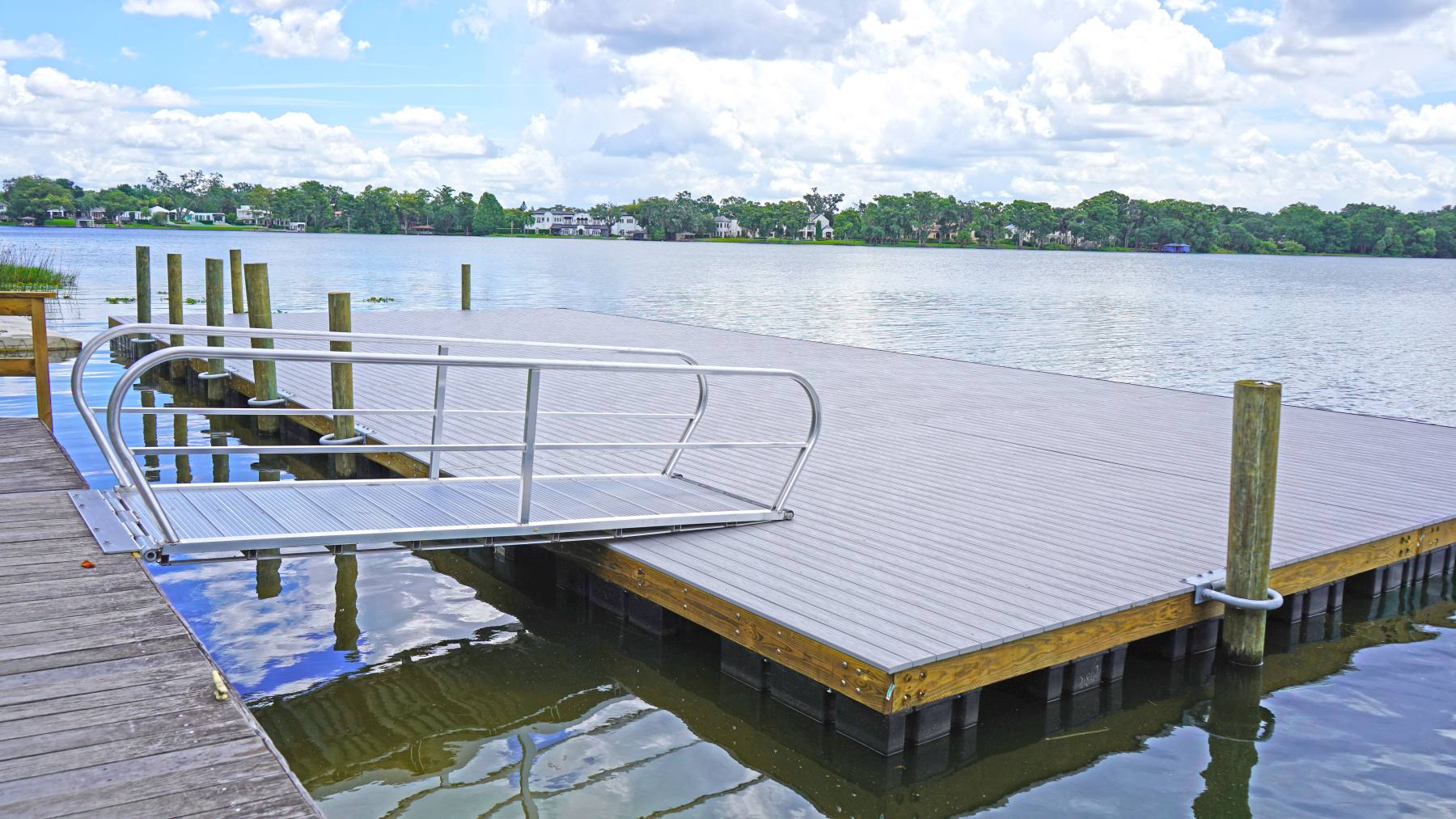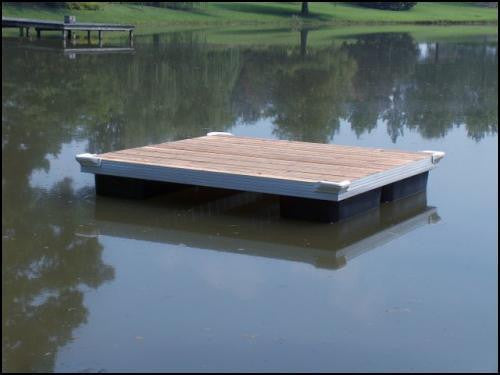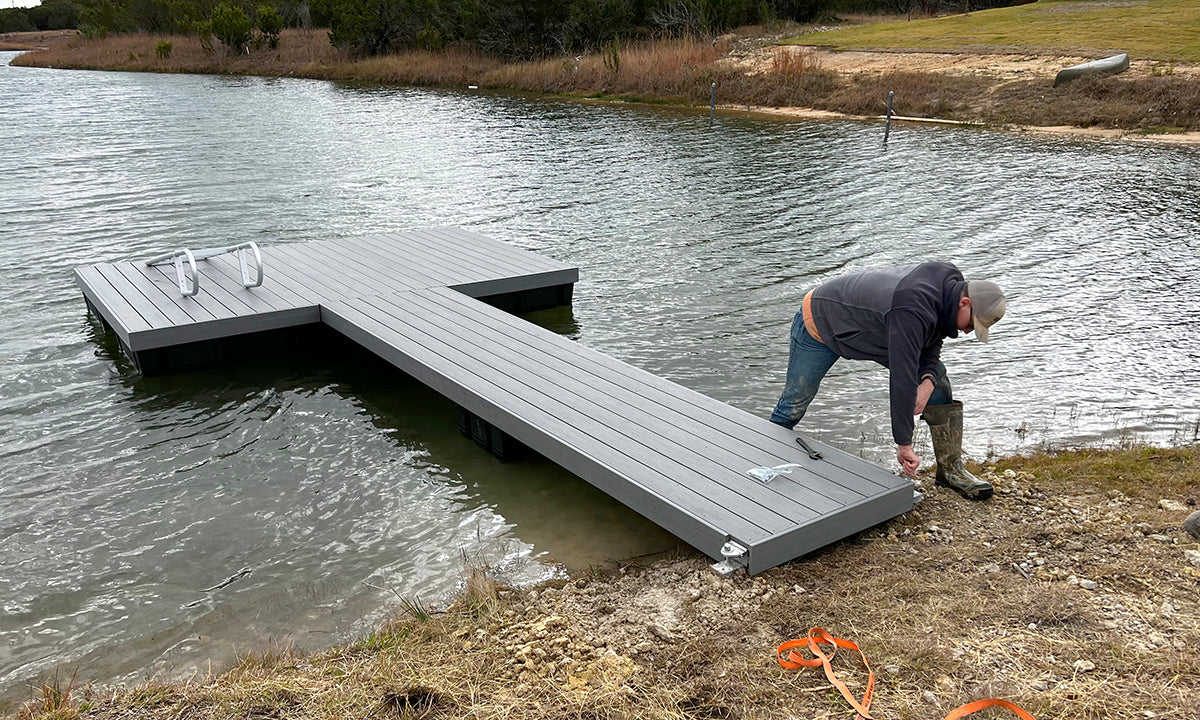Checking Out the Comprehensive Floating Dock Solutions Offered by Sector Leaders
The Ultimate Overview to Picking the Ideal Floating Docks
Choosing the ideal floating dock needs an extensive understanding of various elements that affect both performance and longevity. Aspects such as dock types, materials, and necessary functions substantially impact your decision-making procedure.
Understanding Floating Dock Types
When selecting a floating dock, it is essential to recognize the various kinds offered, as each offers unique objectives and applications. Floating docks mainly fall right into three classifications: modular, stationary, and pontoon docks.
Modular docks are made up of specific areas that can be quickly put together or reconfigured, making them perfect for altering water degrees and diverse usages, such as commercial operations or recreational activities. Their flexibility permits customization based upon specific needs.

Pontoon docks are identified by their resilient structure, often made up of numerous pontoons that supply security and support. They are especially appropriate for larger vessels and are typically utilized in marinas or for waterside buildings. Comprehending these kinds help in selecting the most proper floating dock to satisfy particular requirements, ensuring optimal capability and security.
Secret Products for Toughness
Picking the best products for floating docks substantially effects their resilience and long life. The most usual products consist of wood, plastic, steel, and composite products, each offering distinctive advantages and constraints.
Wood, frequently preferred for its aesthetic appeal, needs normal maintenance to hold up against moisture and degeneration. Pressure-treated lumber can boost resistance to rot, however it might still be vulnerable to insects and weathering.

Plastic docks, constructed from high-density polyethylene (HDPE), are resistant to rust, UV radiation, and influence, making them a prominent choice for seaside atmospheres. Their lightweight nature likewise promotes very easy installation and moving.
Steel docks, normally built from aluminum or galvanized steel, offer phenomenal stamina and sturdiness. They are immune to rust, specifically when treated, yet may need additional insulation to stop warm build-up in warm environments.
Composite materials, incorporating wood fibers and plastics, deliver the advantages of both timber and plastic, withstanding moisture and fading while needing very little upkeep. - floating dock company
Eventually, the option of materials should straighten with ecological problems, meant usage, and maintenance preferences to make sure the floating dock continues to be practical and cosmetically pleasing over time.
Necessary Attributes to Take Into Consideration
While the selection of products is critical, considering crucial features for floating docks is just as important to guarantee ideal performance and individual fulfillment. One crucial feature to examine is the dock's buoyancy ability, which establishes how much weight it can support without immersing. floating dock company. This is important find out here now for fitting watercrafts, personal watercraft, and even recreational activities
Furthermore, portability is a substantial consideration. Relying on your demands, you might want a dock that is very easy to deliver and dismantle, especially if you prepare to move it seasonally. Stability is another vital feature; a properly designed floating dock needs to lessen activity brought on by wind and water currents, supplying a protected system for users.
Safety and security attributes, such as non-slip surface areas and rounded sides, are likewise vital to prevent accidents, particularly in wet conditions. navigate to these guys Furthermore, take into consideration the schedule of accessories, such as bumpers, cleats, and ladders, which can enhance the capability of your dock.
Installation and Upkeep Tips
Setting up and maintaining a drifting dock calls for careful preparation and focus to detail to guarantee its longevity and optimum performance. Begin by selecting a proper location that lessens exposure to strong currents and waves, which can create damage. Guarantee that the water deepness is adequate for the dock's height and that it is secured firmly to avoid movement.
Throughout setup, follow the manufacturer's standards very closely, as incorrect setting up can jeopardize security. Use high-quality products resistant to corrosion, such as light weight aluminum or dealt with timber, to improve durability. Frequently examine all components, consisting of floats, adapters, and securing systems, for indications of damage or wear.
Upkeep is important for extending the life of your dock. Clean the surfaces occasionally to protect against algae accumulation and look for any type of loosened fittings that may require tightening up. If your dock utilizes flotation protection gadgets, guarantee they stay intact and totally free from slits. In addition, consider applying protective layers to wooden components to minimize weathering effects. By sticking to these installment and upkeep tips, you can delight in a functional and dependable floating dock for several years to find.
Budgeting for Your Dock
Budgeting for your dock is a vital step that can significantly affect your general fulfillment and investment in a beachfront residential or commercial property. Developing a clear spending plan aids you browse the different alternatives readily available and ensures you make notified choices that line up with your economic capacities.
Begin by determining the size and style of the dock you need, as these variables will considerably affect the price. Floating docks can vary considerably in cost, relying on materials, buoyancy, and attributes like ramps and devices. Research various makers and providers to compare rates and comprehend the market value.
In addition to first costs, think about ongoing expenditures such as maintenance, insurance, and possible fixings. Allocate funds for these recurring costs to avoid surprises down the her explanation line. It's also sensible to allocate any kind of needed permits or evaluations, which might be needed by neighborhood policies.
Finally, bear in mind the possible return on financial investment. A tactical dock can enhance your home's value and charm, supplying a positive monetary effect in the long term. By budgeting effectively, you can make sure that your dock fulfills your requirements without endangering your monetary security.
Final Thought
In conclusion, choosing the suitable floating dock demands an extensive analysis of various elements, including dock kinds, materials, necessary attributes, and installment processes. Focusing on toughness and conformity with local guidelines ultimately improves functionality and residential property worth. Careful factor to consider of monetary restrictions will certainly better make certain a sound financial investment. By sticking to these standards, people can make educated choices that advertise lasting contentment and usability in aquatic settings.

While the choice of materials is vital, considering vital functions for floating docks is just as vital to ensure ideal efficiency and individual satisfaction.Setting up and keeping a floating dock requires careful preparation and interest to information to ensure its longevity and ideal efficiency. Floating docks can vary dramatically in rate, depending on products, buoyancy, and functions like accessories and ramps.In final thought, selecting the optimal floating dock necessitates a complete analysis of various factors, consisting of dock types, products, vital functions, and setup procedures.